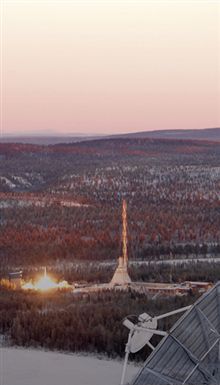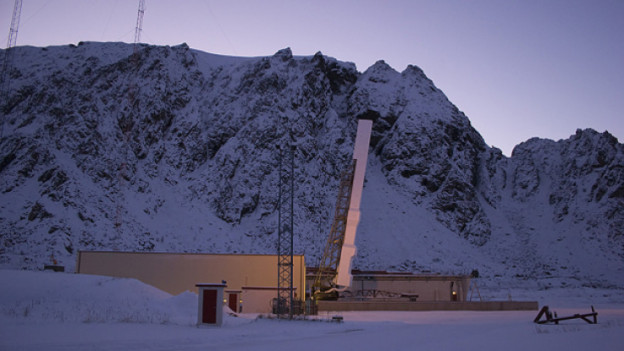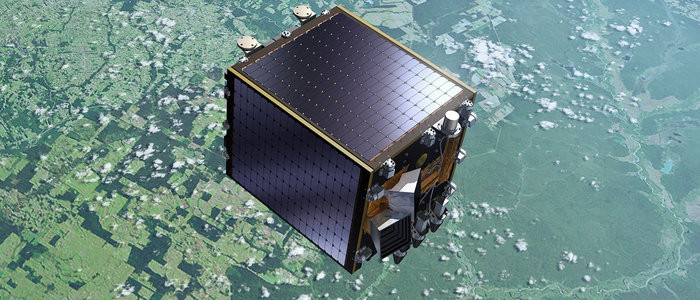Both Norway and Sweden plan to launch small satellites, Sweden from Esrange, and Norway from Andøya; areas well situated north of the polar circle and extremely suitable for launching satellites to near polar orbits. Both countries are in the planning and developing phase for launching the first satellite in about 2020, and one may sense a friendly space race between neighbouring countries.
The two projects are nearly identical; further developing the existing facilities for sounding rockets to launching small satellites for near polar orbits. The market segment and the time schedule are almost similar. The main difference is the planned launchers. Sweden seeks launchers in the commercial market, while Norway plans to develop a hybrid launcher as a part of the project.
Both countries, however, operate and plan their launches based on environmentally based technology, meaning, “going green”.
It is difficult to estimate which projects will be launched first, a satellite from the Scandinavian peninsula, but possibly both may launch their first satellite in 2020. Truly, there is market for both projects, besides, there are few places in the world where small satellites can be launched, and the market seems to be in demand. In 2015, about one hundred small satellites were launched around the world, while today the trend seems to suggest an expansion to more than 400 in 2020, additionally; the number of satellites is estimated to increase the first years of the next decade.
New Esrange.

Sounding Rocket from Esrange. Credit: SSC
The launch facility at Esrange already has much of the infrastructure for launching small satellites; launch areas, service facilities, facilities for the launch and early operation phase (LEOP) and they have the necessary experience in operating satellites in the operative phase. However, considerable amounts of money still need to be invested in terms of building new facilities or upgrading existing ones. The Smallsat Express, with capabilities to launch up to three small satellites every year, is new.
Smallsat Express.
The main target payloads for Esrange are satellites at the size of 1-50 kg, but satellites at a weight of 150 kg can be launched. Standardized orbits will be sun synchronous with an orbit height of 500 km and an ascending node at 0600, 1400 and 2200 local time. Fixed launch periods 1-3 times a year; January, April and August.
The launcher will be bought at the commercial market, but the orbit raiser will be based on the Swedish ECAPS’ High Performance Green Propulsion. The main thread in the project will be that the New Esrange will be a “green” launch site, environmentally friendly.
Andøya Space Center

Ready for new launch from Andøya. Credit: Andøy Space Center.
Like Esrange, Andøya Space Center already has much of the facilities necessary for launching small satellites. The impact area for Andøya is at the sea, while the impact area for Esrange is in the sparsely populated Northern Sweden. However, the burn-out first stage can be rescued after softly landing in water.
The Small Innovative Launcher for Europe (SMILE)
Included in the plans for launching satellites from Andøya is developing its own launcher. For several years, the Norwegian Nammo Raufoss AS has developed and tested hybrid engines for sounding rockets. Based on this, a launcher for small satellites will be developed. Both Nammo Raufoss AS and Andøya Space Center participate in the SMILE – project together with several other European Companies.
Developing and building very small satellites has been very trendy in recent years. Previously, they were mostly used to conduct student experiments, however, in recent years miniaturizing nearly all types of components has been satisfactory for very small satellites, used both for scientific and commercial tasks.
Nonetheless, launching small satellites is sometimes difficult. Until recently, very small satellites have been launched as piggy backs together with a large main satellite, completely dependent on the large satellites’ timeline and orbit parameters. Some small satellites are sent to the Space Station in a resupply mission, and placed in orbit from the station; an operation deemed very awkward and expensive. Very large commercial systems, such as OneWeb and Orbcomm develop their own dispenser systems for many satellites and launch with the large and well-proven launchers. However, that is not a solution for operators of one or few satellites.
Developing launchers for launching small satellites is therefore the new trend at the launching area.
Featured image:
A typically small satellite. Credit: ESA


